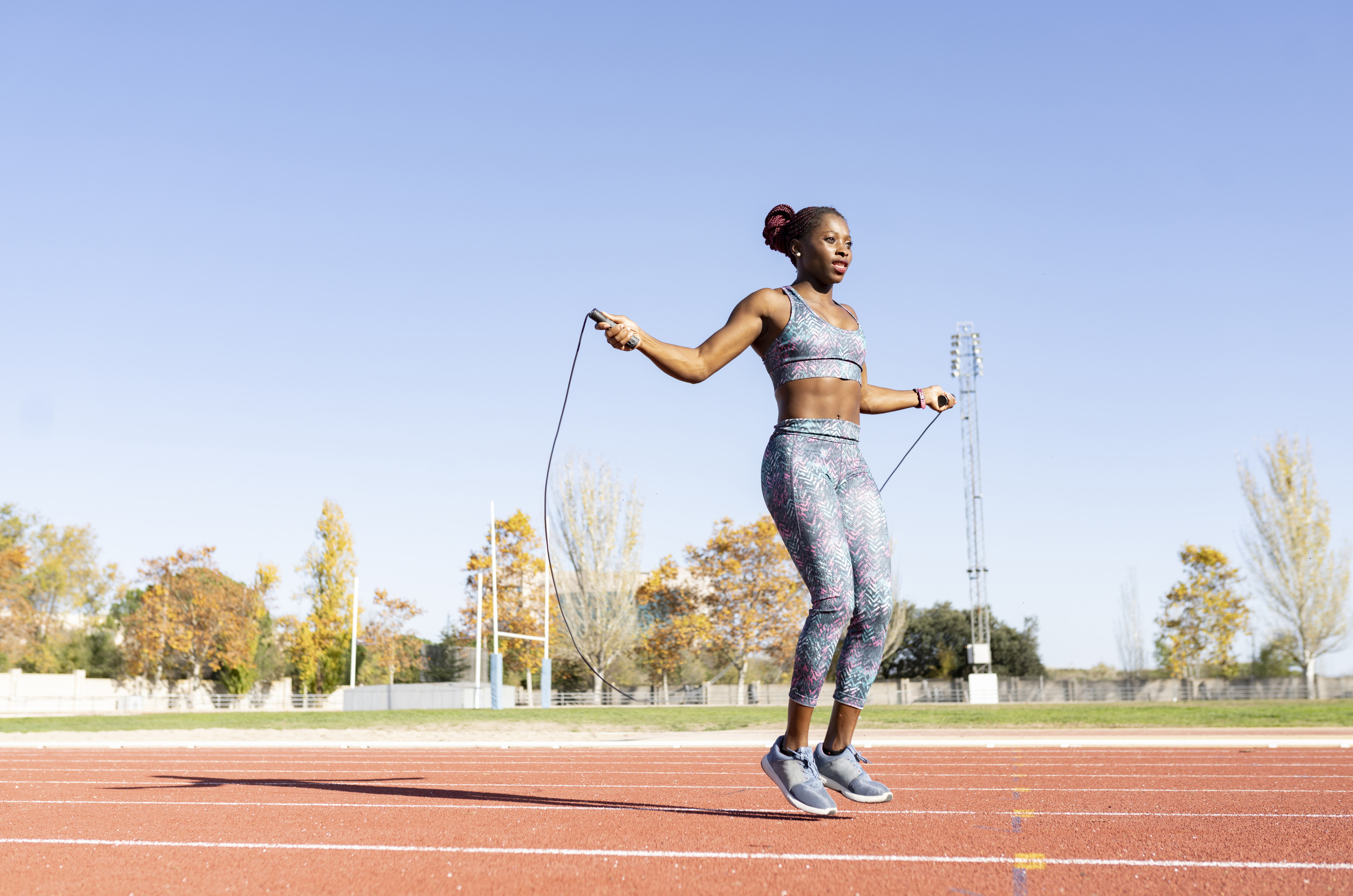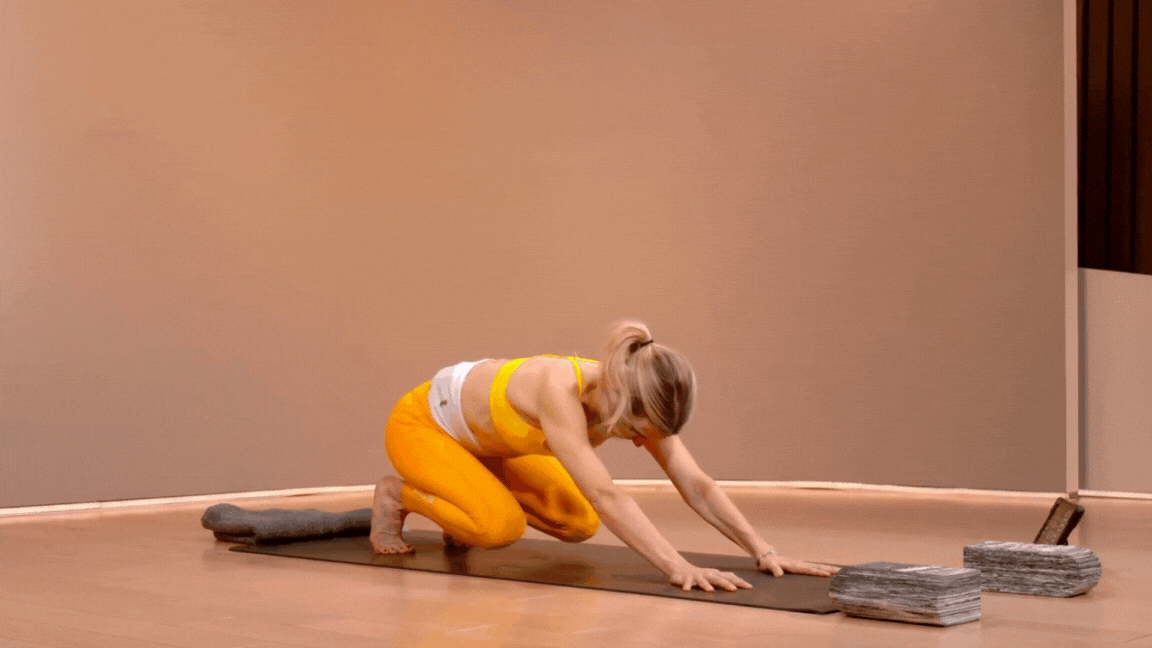
Westend61/Westend61 via Getty Images
5 Exercises to Build Stronger Calves
Add them to your next leg day workout.
By Kells McPhillips•
Why Train Your Calf Muscles?
Get to Know Your Calf Muscles
How to Approach Calf Muscle Training
The Best Strength Exercises for Your Calf Muscles
How to Stretch Your Calves
How to Prevent Injuries In the Calves
When it comes to strength training, the major muscles get all the hype. Glutes, hamstrings, quads, biceps, pecs—these are the big names in the world of gains. But your calves, the muscles of your lower legs, are just as important for building full-body strength. Here’s what you need to know about incorporating calf exercises into your workout routine and why it’s so important.
Discover more ways to reach your goals with Peloton
Why Train Your Calf Muscles?
Calf training is a non-negotiable part of holistic strength training, according to Peloton instructor Clifford Dwenger. “Our legs are the pillars of the body. The calves are active when walking, jogging, running, cycling, rowing, standing up, sitting down, and many more movements,” he explains.
Your calves are also responsible for plantarflexion of the foot and ankle. Meaning, they help you press your foot down on the gas pedal of your car or stand on your tiptoes so you can reach something on a high shelf. Strengthening this muscle group ensures that you can perform these movements like they’re second nature.
Because the calves provide a foundation for your legs, strengthening them will also lead to more fitness in your entire lower body. For example, strength training moves that aren’t necessarily calf-focused—like squats or deadlifts—will start to feel more doable simply because your calves are engaged and strong.
Get to Know Your Calf Muscles
The “calves” are located on the back side of your lower leg and are composed of two main muscles: the gastrocnemius and the soleus. The gastrocnemius is the visible calf muscle that you can see just under the skin of your lower leg. It connects to the Achilles tendon as well as two joints: your knee joint and your ankle joint.
The soleus, meanwhile, isn’t visible from the outside. This flat muscle spans from right below your knee to just above your ankle and is responsible for helping you run, jump, and stand up straight.
Last, but certainly not least, your calves also contain the plantaris, a mini-muscle sandwiched between your gastrocnemius and your soleus. It acts in tandem with the two, but interestingly, about 10 percent of the population doesn’t even have a plantaris.
How to Approach Calf Muscle Training
As with all training, planning is a vital component of calf muscle gains. Before you plug a few lower leg-centric exercises into your training program, it’s important to reflect. Do you have any calf injuries (past or present) that should alter your approach to training? If so, consider speaking with your doctor or a physical therapist before you try calf exercises.
How Often Should You Exercise Your Calves?
If you’re ready to incorporate calf exercises, Clifford recommends doing them a couple of times per week. However, that doesn’t mean that you need to declare calf day the new leg day and go ham on your gastrocnemius and soleus. Instead, consider adding a calf exercise to your normal leg day rotation. For instance, if you have squats and deadlifts, on deck, try adding a few calf raises to the mix.
The Best Strength Exercises for Your Calf Muscles
No lower body move can be completed without the help of your calves. Whether you’re lunging, squatting, or deadlifting, your lower legs are involved. Still, some exercises specifically target the calves—and thus, deserve to be part of your vocabulary. Below, Clifford shares some of his go-to calf-strengthening exercises. Plus, learn how to perform each move with good form and safety in mind.

Weighted Calf Raises
Weighted calf raises are perhaps the easiest way to challenge your gastrocnemius and soleus. The move requires holding a pair of dumbbells at your waist and lifting onto your toes, a simple move that really makes your calf muscles fire.
How to Do Weighted Calf Raises
1. Choose a repetition and weight pattern that is consistent with your current training. For example, if you’re lifting heavy weight for a low number of repetitions, do the same for your calf raises. Or, if you’re opting for lower weight and more reps, pick up a lighter pair of dumbbells.
2. With your feet hip-width distance apart, grab your dumbbells.
3. Lift your heels up and down by pushing through the ball or front of your foot. Make sure you move with control, lowering and raising the heels of your feet slowly and deliberately.
Single-Leg Weighted Calf Raises
For an extra challenge, try single-leg weighted calf raises. This variation will allow you to work on strengthening one leg at a time—a useful approach given that many of our daily movement patterns—from walking to running that require us to move one leg at a time. By working on each leg individually, you can better address imbalance and weakness and boost your functional fitness.
How to Do Single-Leg Weighted Calf Raises
1. Grab a single dumbbell and find a spot near a wall.
2. Place your right hand on the wall and hover your right foot.
3. Hold the dumbbell in your left hand. Slowly, with intention, raise and lower your left heel.
4. Repeat your reps on the opposite side.
Seated Calf Raises
This move can be completed on a seated calf-raise machine or with dumbbells. While standing calf raises primarily target the gastrocnemius muscle, the seated version goes deep (all the way into the soleus). So, while both exercises are great, completing both each week may give you a little more bang for your buck.
How to Do Seated Calf Raises
1. Sit upright on a bench or a chair. Place your feet just below your knees so your lower body is at a 90-degree angle.
2. Place the dumbbell just above your knees and use your hand to steady the weight (without applying pressure).
3. Lift your heels up and down by pushing through the ball of your feet.
Squat Raise With Safety Bar
If your gym has a safety squat rack, you can use it to complete heavier calf raises in a safe manner. Remember: Just because you can add extra weight doesn’t mean you always should. Choose an effort that challenges you, but doesn’t put your calf muscles at risk.
How to Do Squat Raise With a Safety Bar
1. Set up the safety Smith machine with an appropriate amount of weight for your body. Make sure the machine is the correct height for you as well.
2. Place your shoulders in the padded shoulder holders.
3. Keeping your core braced and a slight bend in your knees, stand up onto the balls of your feet. Slowly lower and lift.
4. Complete the necessary reps and take a rest before your next set.
Calf Press
The calf press can be completed on a regular old leg press machine and works your entire lower leg—including your ankles and feet. So, if you only have time for one calf exercise, this may be the one to add to your schedule.
How to Do Calf Presses
1. Weight the bench appropriately for your strength levels.
2. On the leg press machine, place the feet hip-width apart.
3. Push through the balls of your feet to lift your heels off the platform. Slowly repeat the exercise, deliberately lifting and lowering your heels.
Jumping Rope
You know from your schoolyard days that jumping rope is an amazing workout. Because you’re pogoing up and down on your toes, the muscles of your lower legs are firing. Since jumping up and down is also an amazing cardiovascular activity, working this exercise into your schedule can improve your endurance and your leg strength in tandem.
How to Jump Rope
1. Grab a jump rope. (Make sure it’s the appropriate length for your height!)
2. Hold one jump rope handle in each hand.
3. Flick your wrists forward to bring the rope up, down, and around your body, making sure to jump as the rope approaches your feet. As you’re practicing, it’s okay to stop and rest in between reps, but eventually, you’ll want to sync up the rope to your movements so that there’s one jump per flick of the rope.
4. For extra calf burn, try one-legged jump roping.
How to Stretch Your Calves
Of course, strengthening your calves is only part of the equation; stretching your calves is just as important for maintaining the health of your lower leg. Ahead, Clifford walks you through a few stretches to add to your playbook when your calves are feeling tight.

Calf Stretch
1. Stand in an upright position with your feet hip-width apart.
2. Bend one leg; place the heel of the other leg on the floor (about five centimeters in front of the other leg).
3. Press the heel into the floor and bend over with your upper body. You will feel a deep stretch in the calf of your front leg.
Banded Calf Stretch
1. Come onto the floor and extend your legs straight out in front of you. If you can’t sit comfortably in this “L” shape, slide a blanket or block below your glutes so you can keep your back straight.
2. Extend your right leg. Bend your left knee and place the sole of your foot inside the right leg.
3. Grab the band in both hands and wrap it around your extended leg.
4. Arch the heel toward your face as you gently pull on the band. Pull tighter to increase the intensity of the stretch, or loosen the strap if it feels like too much.
5. Hold for a few deep breaths, then switch legs.

Downward Facing Dog
1. Come onto your hands and knees.
2. Tuck your toes and lift your hips back and up toward the ceiling, coming into down dog. Bend your knees as much as you need to feel comfortable in this position.
3. Bend and straighten your knees, one at a time, to stretch into the calves. Work gently and slowly, and slowly lower back down to your hands and knees when you need a break.
How to Prevent Injuries In the Calves
If you’re wondering how to avoid calf injuries, stretching, and strength training are a great place to start. “A strain is a common injury of the calf muscle,” says Clifford. “To prevent injuries, you should avoid overtraining, include enough recovery time before the next session, and incorporate regular stretching, and (if possible) massages.”
If you suspect that your calf muscles may already be injured, suspend your calf stretching and strengthening and see a doctor ASAP. After all, the whole point of fitness is looking out for your body.

Peloton App
Access thousands of classes with no equipment needed.
This content is for informational and educational purposes only and does not constitute individualized advice. It is not intended to replace professional medical evaluation, diagnosis, or treatment. Seek the advice of your physician for questions you may have regarding your health or a medical condition. If you are having a medical emergency, call your physician or 911 immediately.
Level up your inbox.
Subscribe for a weekly dose of fitness, plus the latest promos, launches, and events.
By providing your email address, you agree to receive marketing communications from Peloton.
For more about how we use your information, see our Privacy Policy.








